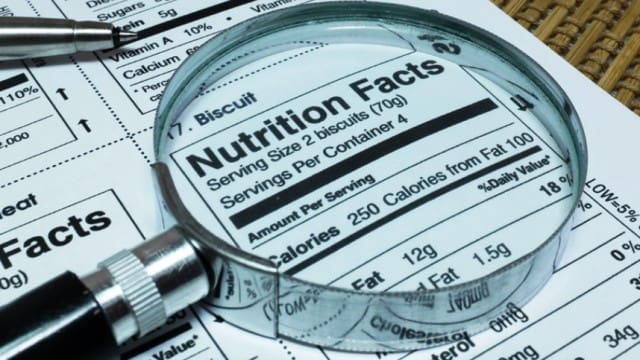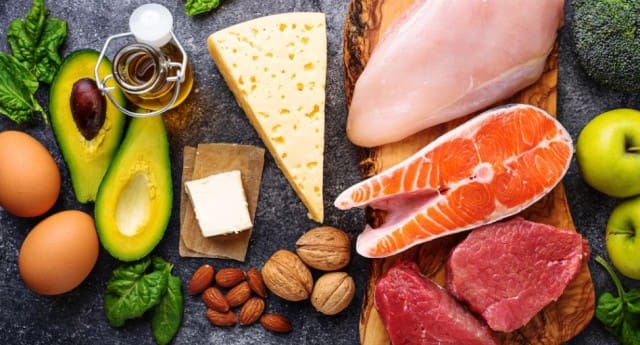
Does Water Have Calories?
It is common to celebrate water’s purity and nourishing qualities, making it the most basic and essential liquid. However some would ask does water have calories. Although the majority of us are aware that water has no calories, the subject of water and its calorie content continues to be interesting due to the wide variety of water products that are available. The science of calories, the calories in water and products related to water, and the advantages of drinking water will all be covered in this article. By the time you’re done, you’ll know why water is your best friend in terms of staying hydrated and leading a healthy lifestyle.

What is a Calorie?
The unit of measurement for energy is a calorie. It is frequently used to measure the quantity of energy that the body releases during the metabolism of food and liquids. The word “calorie” actually refers to a kilocalorie, which is the equivalent of 1,000 calories.
The composition of macronutrients in food determines its energy content. Proteins and carbohydrates have about 4 calories per gram, whereas fats have about 9 calories per gram. Alcohol has a calorie content of roughly 7 gram per gram. Keeping an eye on your caloric intake is frequently essential to controlling your weight and eating a balanced diet.

How are Calories Typically Measured?
Calories, units of energy derived from food, are often measured using a variety of methods and techniques.Here is the explanation:
Bomb Calorimeter: In the laboratory, scientists use a device called a bomb calorimeter.Food samples are placed in sealed containers or bombs and burned. The heat produced by combustion is measured and directly related to the calorie content of the food.
Atwater System: This system estimates calories based on the macronutrient composition of the food.Carbohydrates and proteins are considered to provide 4 calories per gram, while fats provide 9 calories per gram. Total calorie content is calculated by adding the intake of each macronutrient.
Food labels: Food manufacturers are required to provide nutritional information on packaging. Calorie content is expressed in kilocalories (kcal) on the nutrition information panel. The values are based on Atwater system estimates, considering the grams of carbohydrates, proteins and fats contained.
Metabolizable Energy: This is a more refined measure that considers energy lost during digestion and metabolism. This explains the fact that not all calories eaten are absorbed and used by the body.
Direct calorimetry: This involves measuring the heat produced by an individual. A person is placed in a specially designed room and the amount of heat produced is calculated to determine energy expenditure.
Indirect calorimetry: This method estimates calories consumed by measuring oxygen consumption and carbon dioxide production. The ratio of oxygen consumed to carbon dioxide produced provides insight into the type of fuel (carbohydrate or fat) used to produce energy.
Activity trackers: Wearable devices like fitness trackers estimate calories burned based on factors like heart rate, movement, and body composition. The algorithm uses these inputs to produce an estimate of calories burned during physical activities.
Harris-Benedict Equation: This formula calculates the basal metabolic rate (BMR), which represents the number of calories burned at rest. The BMR is then multiplied by the activity factor to estimate total daily energy expenditure.
Diet software: Various apps and online tools allow users to enter their daily food intake. These tools use food databases and algorithms to estimate the calorie content of a diet based on serving sizes and nutritional information.
Bioelectrical impedance analysis (BIA): The BIA device measures the resistance of electrical current passing through the body. By considering factors such as body composition, these devices estimate resting metabolic rate and thus estimate calorie needs.
Calorie measurement involves a combination of scientific methods, food analysis, and technological tools to provide accurate estimates of the energy content of different foods and the levels energy consumption of each individual.

What are the Sources of Calories?
Calories are units of energy derived from the foods and drinks we consume. The human body needs a certain amount of calories to function optimally, and these calories come from a variety of sources.Here, we’ll explore the main sources of calories in a typical diet:
- Macronutrients:
Carbohydrates: Carbohydrates are the main source of calories, providing 4 calories per gram.Foods such as bread, rice, pasta and cereals are high in carbohydrates.
Protein: Protein also provides 4 calories per gram.Sources include meat, fish, poultry, dairy, beans and legumes.
Fat: Fat is the most calorie-dense macronutrient, providing 9 calories per gram.Examples of high-fat foods include oils, butter, nuts, seeds, and avocados.
- Simple sugars:
Added sugars: Found in processed foods, sweets and sugary drinks, added sugars provide empty calories with limited nutritional value.
Natural Sugars: Fruits and some vegetables contain natural sugars as well as fiber, vitamins and minerals, providing a more nutritious source of calories.
- Alcohol:
Although not a nutrient, alcohol contains 7 calories per gram.Beer, wine and spirits contribute to overall calorie intake.
- Drinks:
Calorie drinks: Sugary drinks like soda, fruit juice and energy drinks contribute to calorie intake.
Calorie-free beverages: Water, tea and black coffee are low- or no-calorie options that still play a role in hydration.
- Dairy products:
Milk and yogurt: These products provide a mixture of macronutrients, including carbohydrates (lactose), protein and fat.
Cheese: A concentrated source of calories due to its fat content, cheese is an important ingredient in the diet.
- Processed foods and fast foods:
Fast foods: Burgers, fries, and other fast food items often contain high levels of unhealthy fats and added sugars.
Processed snacks: Chips, cookies and other snacks are often high in fat and sugar.
- Nuts:
They are rich in healthy fats, protein and some carbohydrates, making them a nutritious and high-calorie snack.
- Vegetables:
Although low in calories compared to some other sources, vegetables provide vitamins, minerals and fiber, making them an essential part of a balanced diet.
- Grains:
Whole grains: Foods such as brown rice, quinoa and whole wheat provide complex carbohydrates, fiber and additional nutrients.
Refined grains: White rice and white bread are processed, providing fewer nutrients but still providing calories.
Does Water have Calories?
There are no calories in pure water. Water does not contain any energy in the form of fats, proteins, or carbs. Calories are units of energy. Juices, sodas, and sports drinks are examples of beverages that contain water along with other ingredients and may contain calories from sugars, carbs, or other sources. If by plain you mean unflavored water, then no, it doesn’t count against your daily intake of calories.
Why does Water Lack Calories?
Molecular composition: Water consists of two hydrogen atoms and one oxygen atom, forming a simple molecule with the chemical formula H2O.Unlike macronutrients such as carbohydrates, proteins, and fats, which are composed of complex structures with carbon, hydrogen, and oxygen atoms arranged in a specific arrangement,water lacks the intricate molecular structures necessary for providing calories.
Calories Definition: Calories are a unit of energy measurement.In the context of nutrition, calories come from the breakdown of macronutrients during metabolism. Carbohydrates, proteins and fats contain energy stored in their chemical bonds and when these bonds are broken, energy is released. Water does not have these energy-storing bonds, so it is thermally inert.
Metabolism: Calorie value is associated with the energy released during metabolism, essentially converting food into usable energy in the body. Water does not undergo the same metabolic processes as macronutrients. It does not fuel the body’s energy needs but plays an important role in various physiological functions.
Hydrogen and oxygen bond: The bond between hydrogen and oxygen in water is stable and does not release energy through metabolic reactions.In contrast, the bonds in carbohydrates, proteins and fats are more complex and can be broken down by enzymatic processes, releasing energy that the body can use.
Digestibility: Water does not undergo digestion in the gastrointestinal tract. Macronutrients, on the other hand, are broken down by digestive enzymes into smaller molecules that cells can absorb and use for energy. This lack of digestion further contributes to the lack of calorie content in the water.
Role in temperature regulation: Although water does not provide calories, it is essential for maintaining body temperature through processes such as sweating and heat dissipation. It plays an important role in temperature regulation, ensuring the body can effectively cool itself during increased temperatures or exertion.
Cell Function: Water is an essential component of cell structure and function. It serves as a medium for various biochemical reactions within the cell, facilitates nutrient transport, and helps maintain cell turgor pressure. Its importance lies in supporting these basic cellular processes rather than providing energy in the form of calories.
Zero Calories Definition: The term “zero calories” is often associated with water because when consumed, it does not contribute to the calorie content of the diet. This is in contrast to beverages such as sugar-sweetened soft drinks or fruit juices, which can be significant sources of calories due to the presence of sugar and other macronutrients.
Is it Possible to Add Calories in Water?
No, you cannot add calories to water in the sense of giving it more nutrition. Since water is a calorie-free substance, it has no calories. Water does not contain any macronutrients, such as proteins, fats, or carbohydrates, which are the sources of calories.
On the other hand, you can make drinks by mixing calorie-containing substances with water. For instance, the mixture that results from adding sugar, fruit juice, or other calorific substances to water has calories. However, it’s the extra ingredients—not the water—that provide the calories. If you are worried about how many calories you are consuming, it is crucial to pay attention to what you put in your water.

Is Water Important Despite Lacking Calories?
Water is essential for life and plays an important role in maintaining overall health and well-being, despite its lack of calories. Here are some key points explaining the importance of water:
Hydration and cell function: Water is a universal solvent, facilitating various biochemical reactions in the cell.It ensures the normal functioning of cellular processes, including metabolism and nutrient transport.
Temperature regulation: Water helps regulate body temperature through processes such as sweating and breathing. Sweating allows the body to release heat, preventing overheating during physical activity or in high temperature environments.
Nutrient Transport: Water serves as a vehicle for transporting nutrients and oxygen to cells and removing waste. Nutrients are water soluble, allowing distribution to various parts of the body for energy production and tissue repair.
Joint lubrication: Water is an essential component of joint fluid, which lubricates joints and provides a cushioning effect. Proper hydration promotes joint health, reduces the risk of injury and promotes smooth movement.
Functions of the digestive system: Water is essential for the digestive process, contributing to the breakdown of food particles and the absorption of nutrients in the digestive tract.It helps prevent constipation by maintaining stool softness and volume.
Cognitive function: Dehydration can impair cognitive function, affecting concentration, alertness and short-term memory. Proper hydration supports optimal brain function, improving mental clarity and overall cognitive performance.
Detoxification: Water plays an important role in the body’s natural detoxification process by eliminating waste through urine and sweat. Drinking enough water promotes the normal functioning of the kidneys and liver by eliminating toxins.
Skin health: Water helps maintain skin elasticity and hydration, contributing to a healthy, youthful appearance. Dehydration can lead to dry skin, premature aging and increased risk of skin disorders.
Weight management: Drinking water before meals can help control appetite, promote feelings of fullness and potentially reduce calorie intake. Staying hydrated is important for people who want to maintain a healthy weight or lose weight.
Preventing health problems related to dehydration: Not drinking enough water can lead to dehydration, which is linked to various health problems such as kidney stones, urinary tract infections and diseases related to heat. Chronic dehydration can have long-term consequences for overall health and well-being.
Conclusion:
Because of its straightforward molecular makeup, stable bonds, poor digestibility, and lack of energy-storing structures that define macronutrients, water is low in calories. It’s crucial for sustaining health and supporting many bodily physiological processes, even though it lacks calories. Its significance goes far beyond basic nutrition; it affects every aspect of life, from cognitive abilities to cellular functions. Making sure you’re getting enough water is essential to supporting a healthy, functioning body.
